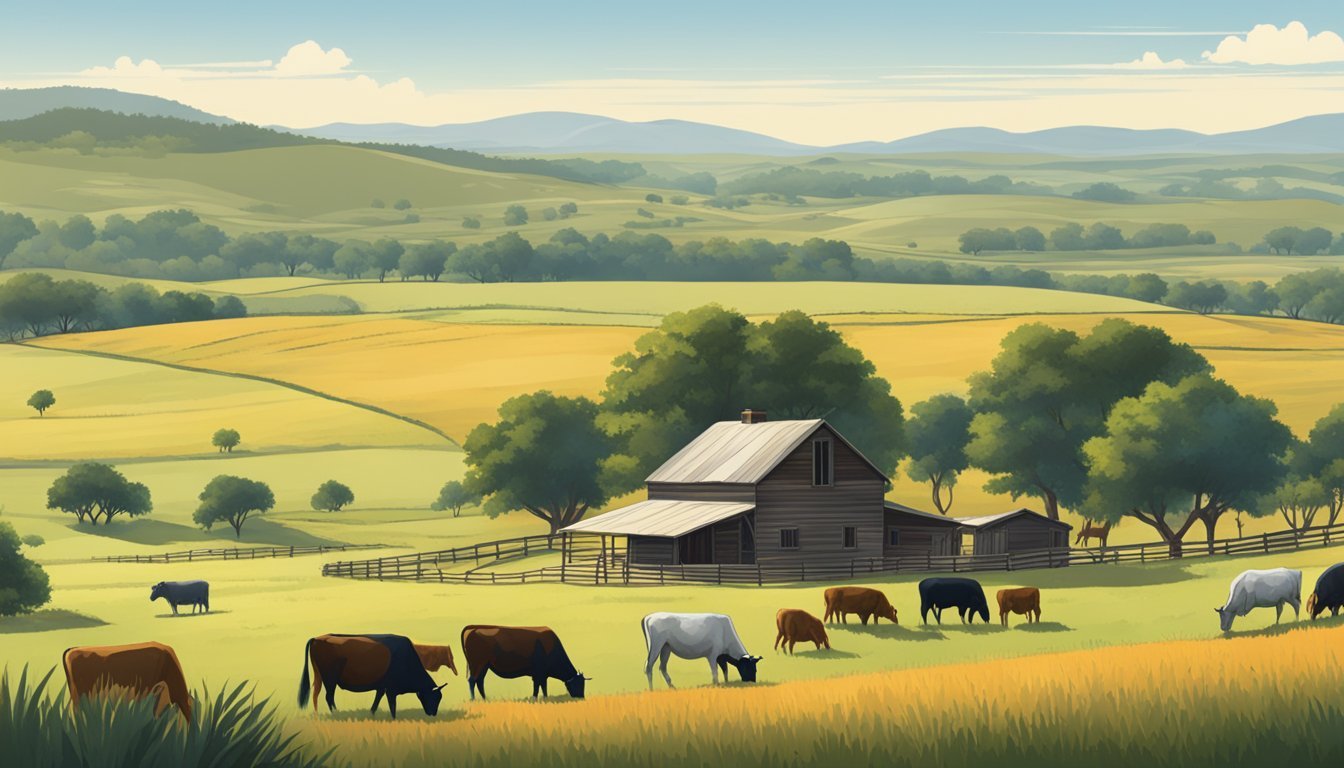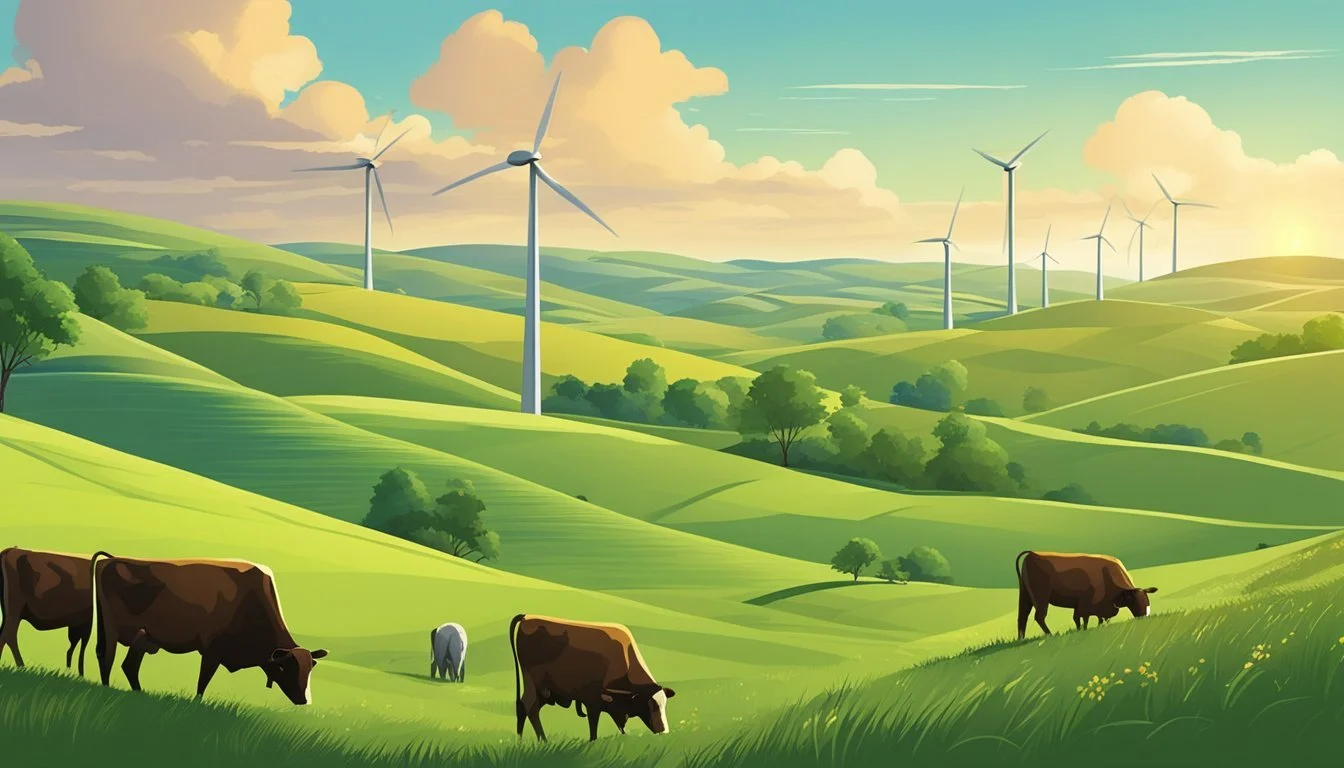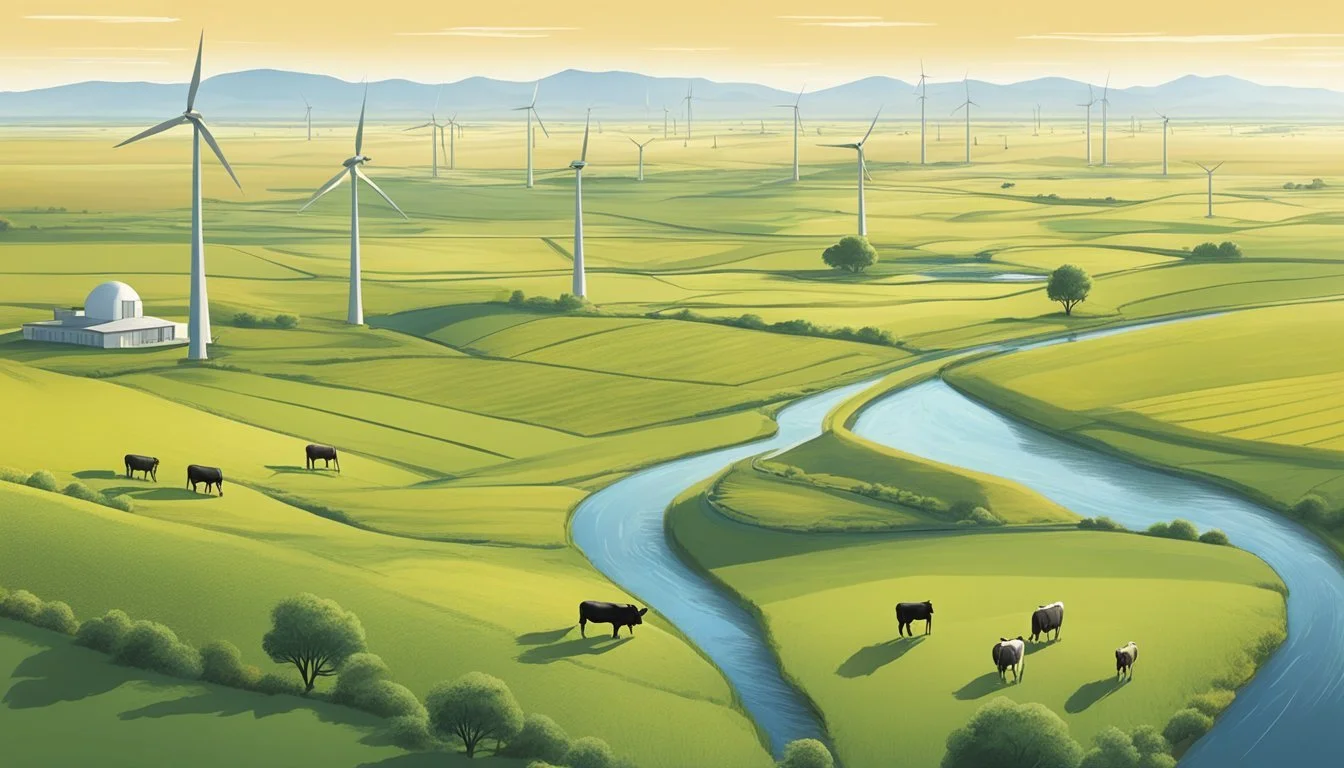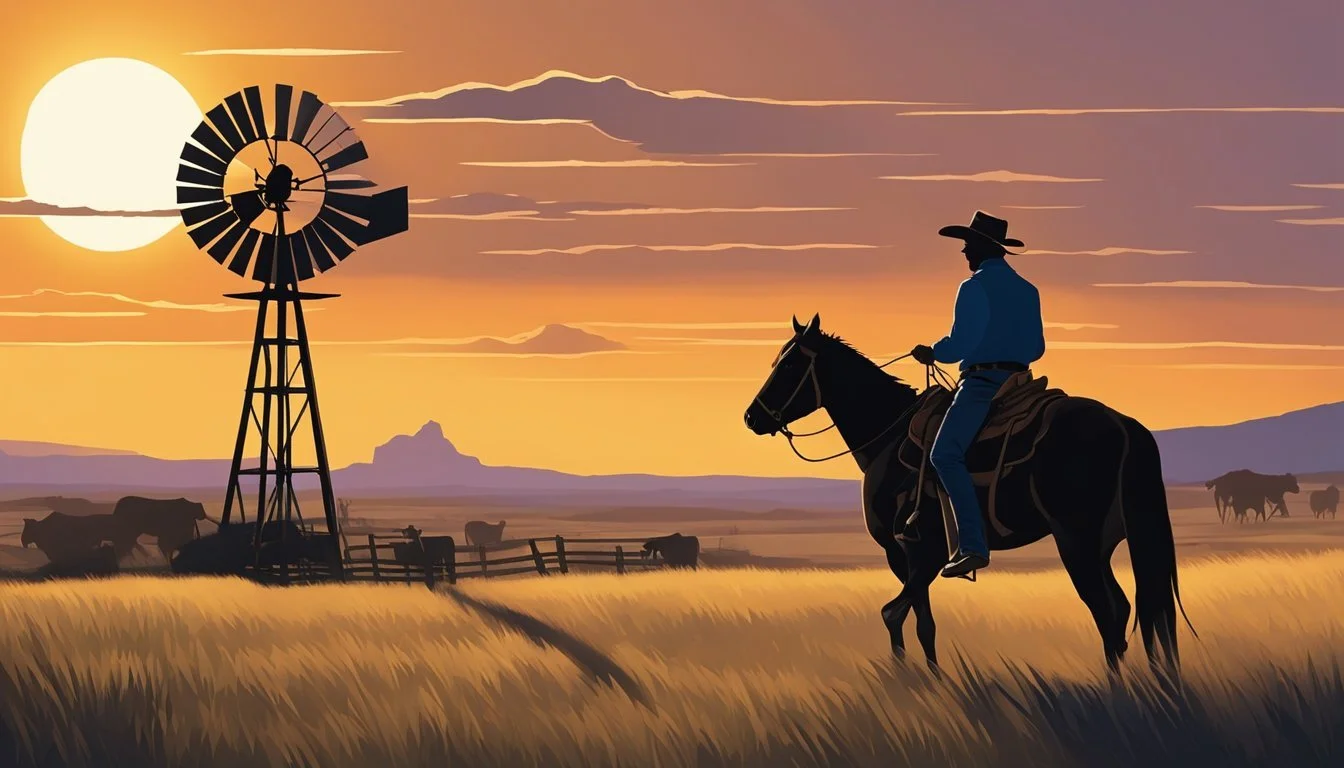The Texas Cowboy's Guide to Sustainable Ranching Practices
Embracing Eco-Friendly Methods
In Texas, ranching has long been a key pillar of both economic livelihood and cultural identity. Stemming from traditions deeply rooted in the history of the American West, Texas ranchers have historically navigated the challenges of the land to raise cattle and work the wide-open prairies. Today, sustainability has entered the lexicon of the industry as a critical component of modern ranching practices. Maintaining the delicate balance of the ecosystem while meeting the demands of a profitable enterprise is the goal that has reshaped the cattle rancher's operations.
Sustainable ranching practices adapt over time, driven by a respect for the heritage of the land and an understanding that long-term success hinges on resource conservation and ecological stewardship. The management techniques employed by Texan ranchers integrate the latest in regenerative agriculture. These methods aim to restore soil health, optimize water use, and enhance biodiversity, ensuring that the land thrives alongside the cattle. Through precision and attention to the cycles of nature, sustainable ranching becomes a symphony of well-considered actions that bolster both the environment and the economy.
The ethos of the Texas cowboy encompasses both a rugged independence and a communal spirit, qualities that are also reflected in their approach to sustainable ranching. By fostering relationships with agricultural experts and neighboring ranchers, Texas cowboys gain valuable insights that contribute to the continuous improvement of their practices. This cooperative spirit underscores the Texas ranching community's commitment to enduring environmental, economic, and social sustainability.
History and Evolution of Texas Ranching
Texas ranching has a rich history rooted in both Spanish and American traditions, starting from early cattle operations to today's modern and sustainable practices. It reflects a significant evolution from the open range era to the sophisticated ranches of the present day.
The Chisholm Trail and Cattle Drives Era
The Chisholm Trail became a major artery for cattle drives in the late-19th century, facilitating the transport of millions of cattle from Texas ranches to railheads in Kansas. Cowboys drove herds across vast open ranges, an experience that became emblematic of the American cowboy. These drives were crucial for the economic development of Texas after the Civil War, marking a significant period in the state's ranching history.
Influence of Vaqueros and Cowboy Culture
Vaqueros, the skilled horsemen and cattle handlers of Spanish Mexico, were the predecessors of the American cowboy. Their traditions and expertise laid the foundation for what would become iconic cowboy culture in Texas. From their distinct gear, such as the lariat and chaparreras (chaps), to their methods of roundups and cattle management, they deeply influenced Texas ranching, creating a culture celebrated for its association with bravery, freedom, and the spirit of the West.
Transition from Open Range to Modern Ranches
The closing of the open range began in the late 19th century, spurred by the innovation of barbed wire and the demand for managed grazing practices. What was once an unfenced, common area for cattle became partitioned into distinct Texas ranches. The shift led to more regulated breeding, feeding, and overall management, which laid the groundwork for modern, sustainable ranching techniques. The transition from open ranges to fenced ranches required adaptation and signaled a new era in Texas ranching history, where efficiency and land stewardship became as central to the cowboy's work as roping and riding were in the past.
Environmental Stewardship and Land Conservation
Environmental stewardship is integral to sustainable ranching, focusing on soil, water, and grassland management to maintain healthy ecosystems. It involves employing practices that positively impact the land, biodiversity, and climate.
Soil, Water, and Grassland Management
Soil health is the backbone of a productive ranch. Sustainable ranching practices include regular soil testing and amendments to ensure optimal pH levels and nutrient availability. Effective water management involves both conservation techniques and maintaining water quality for livestock and irrigation. These practices often include rainwater harvesting and the construction of check dams to slow runoff and prevent erosion.
Grassland management is critical, as it affects both the soil and the water cycle. Rotational grazing practices help prevent overgrazing, supporting perennial grasses' growth and regeneration. This management also promotes root systems' development, which can increase the soil's water retention capacity.
Soil Testing: Regular assessment for pH levels and nutrients.
Water Conservation: Techniques include rainwater harvesting.
Grassland Management: Rotational grazing to support grass growth.
Biodiversity, Ecosystems, and Climate Change
Biodiversity and healthy ecosystems are vital indicators of a ranch's sustainability. Texas ranchers can enhance biodiversity by preserving native habitats and protecting wildlife corridors. Maintaining diverse ecosystems supports resilience against pests and diseases and contributes positively to broader climate change mitigation strategies, such as carbon sequestration.
Wildlife Protection: Creating and maintaining corridors for native species.
Ecosystem Health: Encouraging diverse habitats to support resilience.
Sustainable Practices in Modern Ranching
Today's Texas cowboys incorporate sustainable practices driven by holistic approaches to ranching. These include the application of carbon farm planning and managed grazing. Together, these strategies work to minimize environmental impact, promote land conservation, and ensure the ranch's economic viability.
Carbon Farm Planning: Techniques aimed at enhancing soil carbon storage.
Holistic Management: Framework that considers environmental, economic, and social factors for long-term sustainability.
Cattle and Livestock Management
In the realm of sustainable ranching, effective management of cattle and livestock is pivotal. This encompasses not only breeding practices and animal welfare but also the application of modern herding technologies and strategic rotational grazing.
Breeding, Herd Health, and Welfare
Sustainable ranching starts with responsible breeding programs that prioritize genetic diversity and robustness to support herd health. Ranchers monitor the wellbeing of animals closely, implementing regular health checks and preventive measures to ensure the livestock's physical and mental welfare.
Innovations in Herding and Tracking
Technology plays a critical role in modern cattle management. The use of GPS tracking systems allows for precise monitoring of cattle movements, enabling better herding practices and ensuring that animals can be located quickly, which is essential for their safety and the efficiency of ranch operations.
Rotational Grazing and Feeding Strategies
Rotational grazing is a cornerstone of sustainable feeding practices, wherein livestock is moved between different pastures to allow vegetation to recover, promoting soil health and plant diversity. This method supports the nutritional needs of the herd while minimizing environmental impact.
Ranch Operations and Economic Sustainability
Effective ranch management and the economic sustainability of ranching operations go hand-in-hand. By focusing on streamlining management, diversifying revenue streams, and accurately assessing economic impacts, ranchers can ensure profitability and longevity in the industry.
Streamlining Ranch Management and Labor
Efficiency is vital in ranch operations. Utilizing technology and software can greatly enhance record-keeping and monitoring of pasture health, herd management, and scheduling of tasks. This, in turn, reduces labor costs and the potential for error. Adoption of innovative practices, such as rotational grazing, can optimize natural resources, leading to a more productive workforce and healthier cattle.
Diversifying Ranch Revenue through Agritourism
Adding agritourism to a ranch's business model introduces a new revenue stream and reduces the economic volatility associated with traditional ranching. Elements like farm stays, guided tours, and educational workshops invite the public to experience ranching culture first-hand while generating additional income. Agritourism also promotes diversity and innovation within the ranching industry, making it an increasingly popular venture.
Assessing Economic Impact and Profitability
Ranch economic sustainability hinges on understanding and enhancing asset value dynamics. Routine assessment of profit margins, cost structures, and market demands ensures that ranchers can make informed decisions that favor long-term growth. Tools like financial ratios and benchmarking can help in evaluating the economic impact of managerial decisions and overall ranch profitability. This knowledge aids in navigating the fluctuating markets and regulatory environments that affect the ranching industry.
Cultural Significance and the Cowboy Legacy
The Texas cowboy symbolizes a legacy marked by robust tradition and a connection to the land, embodying values such as integrity and hard work. This section delves into the roles that cowboys have played in shaping the cultural heritage of Texas.
Texas Traditions and the Influence of Cattle Ranching
Tradition: Throughout Texas' history, cattle ranching has been a driving force behind the state's economic and cultural development. The iconic Texas Longhorn, recognized for its distinctive horns, became a symbol of this deep-seated tradition. Cowboys, originally known as vaqueros, garnered respect for their horsemanship and cattle handling skills.
Cultural Celebrations: Rodeos and cattle drives echo the historical practices of ranching, serving as living reminders of the Texas cowboy's way of life.
Cowboy Ethics: Leadership, Integrity, Hard Work
The cowboy culture in Texas is not just about the iconic hat and spurs; it's steeped in a code of ethics that emphasizes leadership, integrity, and hard work.
Integrity: A cowboy's promise is as steadfast as their steady gait on the open range, a testament to their honesty and reliability.
Hard Work: Endless hours of toil under the Texas sun have etched a legacy of diligence and perseverance into the cowboy heritage.
Preserving Heritage and Educating Future Generations
As the stewards of cowboy culture, Texans recognize the importance of imparting this heritage to future generations.
Education: Museums and historical sites spread throughout the state that exhibit the importance of ranching and cowboy culture, ensuring this legacy prevails.
Connection to the Land: Sustainable ranching practices today honor the cowboys' enduring respect for the Texas landscape, balancing tradition with modern conservation methods.
The cowboy legacy in Texas not only continues to contribute to the state but also forms a cornerstone of American identity.
Conclusion: The Future of Sustainable Ranching in Texas
Sustainable ranching practices offer a promising pathway for Texas ranchers aiming to become resilient land stewards. By adopting regenerative techniques, such as holistic management of cattle and land, they play a vital role in the environmental and economic steadiness of the region.
These ranchers invest in the health of the soil, understanding its critical part in the regeneration cycle. They move livestock periodically, simulating natural grazing patterns to prevent overgrazing and to support soil restoration. As stewards of the land, they recognize the necessity to maintain the balance between ranching as a lifestyle and the ecological integrity of their environment.
The transformation towards sustainable ranching is not a trend but rather a long-term commitment. Texas ranchers, with their deep connection to the land, are positioned to lead by example. They stand at the forefront of a movement that intertwines economic development with ecological mindfulness.
Key aspects of sustainable ranching include:
Regenerative Grazing: Mimicking natural wildlife patterns.
Soil Health: Promoting biodiversity and water retention.
Livestock Management: Increasing the turnover of animals constructively.
As they look to the future, Texas ranchers continue to draw from their rich heritage while shaping a more sustainable and robust agricultural framework. It is this blend of tradition and innovation that signals a positive outlook for sustainable ranching in Texas.







